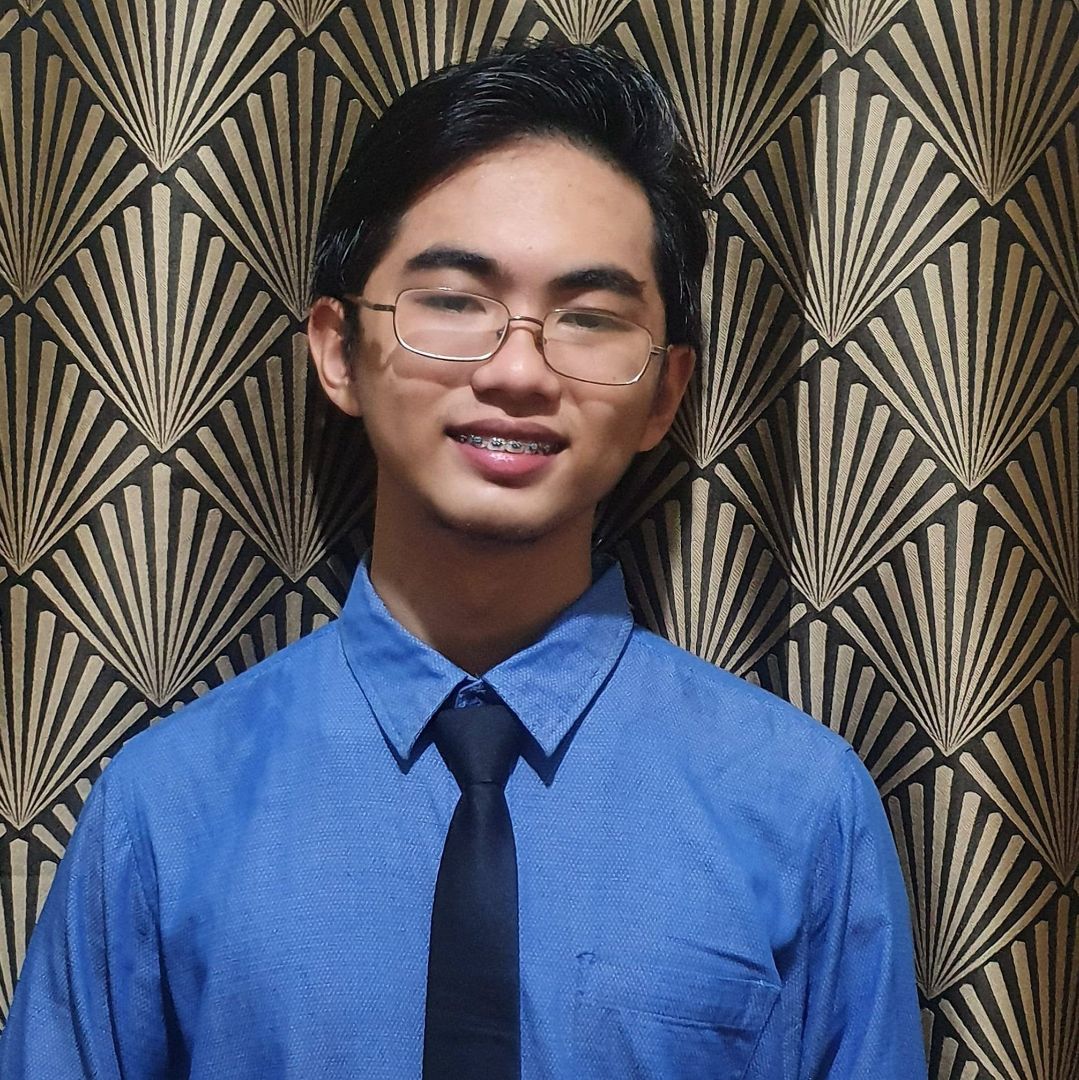This essay was written by Neo Elrond Valente Cabrera, age 16, from the Philippines in response to the 2021 Global Voices essay contest in Southeast Asia. Neo was awarded second place for this entry.

I flashed back to a virtual interview I recently conducted with a science teacher, who we will call Mrs. Interino. We talked about the inequity of words and science afflicting the Philippines during the pandemic, where loanwords like "vector," "lockdown," and "mutated variant" are normal, yet do not have one-to-one equivalents in Filipino.
“During the pandemic, many of my students’ parents are fearful of the COVID-19 vaccinations. I remember the mother of a student named Jay, who said that English words like ‘mRNA vaccine’, ‘contact tracing’, and ‘clinical trial’ sound strange and scary. When I advised my students to try to explain them, they have problems translating and explaining those words very well in Filipino, because they’re not good with the language," Mrs. Interino said.
"You see, when someone is not well-educated in English, particularly for science, they can completely misinterpret those words, which leads to them becoming distrustful. That contributes to people becoming antivaxxers who draw wrong conclusions based on their limited knowledge of English," she added, sighing.
According to the Philippine Statistics Authority, only 33 percent of the Philippine population are college students. A smaller percentage of these students study science, medicine or engineering. Therefore, only a minority are capable of fully understanding and using technical and scientific English. This scientific language inequity not only ties the tongues of ordinary Filipinos but also their minds. As a high school student, I occasionally find myself asking questions like “How do you translate mutation or variant into Filipino?" Additionally, I and fellow researchers studying local cases of COVID-19 do not find sufficient amounts of dossiers, comprehensive explainers, and peer-reviewed scientific articles published or translated into the eight major languages of the Philippines. Given that most scientific articles also rely on massive amounts of jargon, the incomprehensibility becomes further compounded.
Serving as a sci-tech campus journalist with a flair for languages, I first launched two qualitative research studies. The first is titled Scilitaan, a portmanteau of ‘science’ and ‘salita’ (Filipino for ‘word’), and it focused on how using Filipino terms frequently improved written and oral scientific literacy among high school students at my school. For Scilitaan, my teammates and I developed a Facebook page, three dozen infographics, and vocabulary flashcards focused on COVID-19, as well as related medical and biological terms. The second study is called Aghamatika, whose name is a mix of “agham” (meaning science) and “gramatika” (or grammar), where I obtained several teachers’ perspectives on the feasibility of implementing Filipino as a scientific and technical language on the same level as English.
Through Scilitaan and Aghamatika, I realized that boosting the presence of Filipino in scientific fields is a daunting job. Most of my current projects need further aid from cultural leaders, scientists, educators, and linguists such as experts from the Commission on the Filipino Language. Aghamatika’s results indicate that I would need a minimum of 2000 to 20,000 dollars to hire graphic artists, consultants, and research assistants.
However, I already have specific goals in mind, especially with the vocabulary lists and articles I prepared with my teammates and research advisers. First, I strive for inclusion of many Philippine languages to coin a modern scientific Filipino, especially since many lesser-known tongues have unique terms for herbs and concoctions, like “malibado” for medicine based on wild mountain cherries. I also follow the principles set by Miranda, coining terms by blending existing words. Two examples of this are selday for cell (a mixture of selula/cell and buhay/life) and sunlad for evolution (a mixture of sunod-sunod/successive and pag-unlad/development). Other tactics I learned from Miranda are reviving old Filipino words, repurposing slang, conjoining words, and adding affixes to root words.
To conclude, I do not just sigh at Philippine science, but also engineer its success by first reducing its language inequity. Improving access to primary sources such as peer-reviewed journal articles in researchers’ native languages mean that—while they inevitably become fluent in scientific English—they remain scientifically proficient in their native languages. I hope for a future where Filipinos, no matter their dialect and ethnic group, can access a comprehensive scientific database with journal articles that they can easily understand and share with their people. Thus, they do not have to fear solutions such as the vaccines and drugs of the future.
I wish to fulfill the dreams of Dr. Miranda, who died believing that Filipino will not be popularly used as a language of science and academics, and instead will just be limited to casual usage. Lastly, I hope to aid my fellow Filipinos to become word shakers, not just in fiction, journalism, or politics, but also in science. As a result, they can easily surpass COVID-19 vaccine woes and fearlessly climb the highest levels of scientific innovation and approval without tongue-tied science.